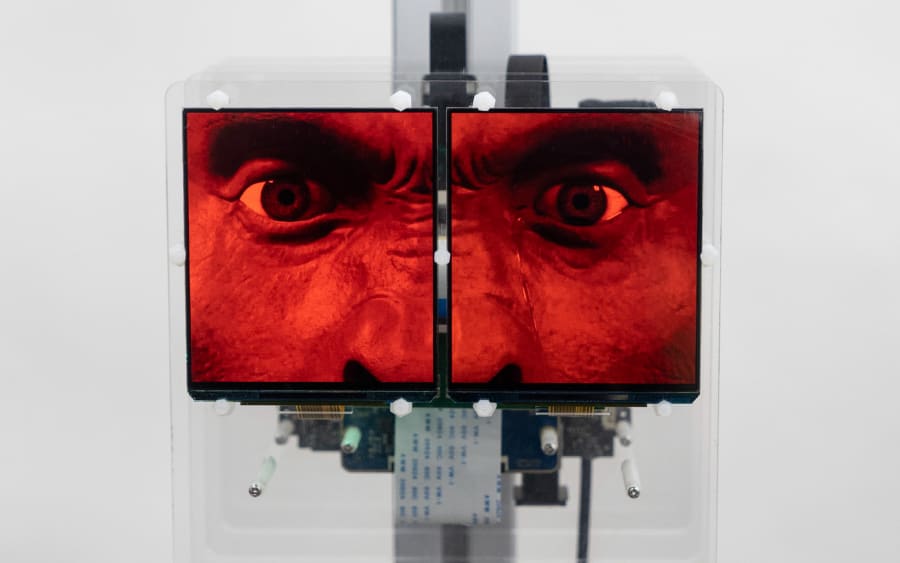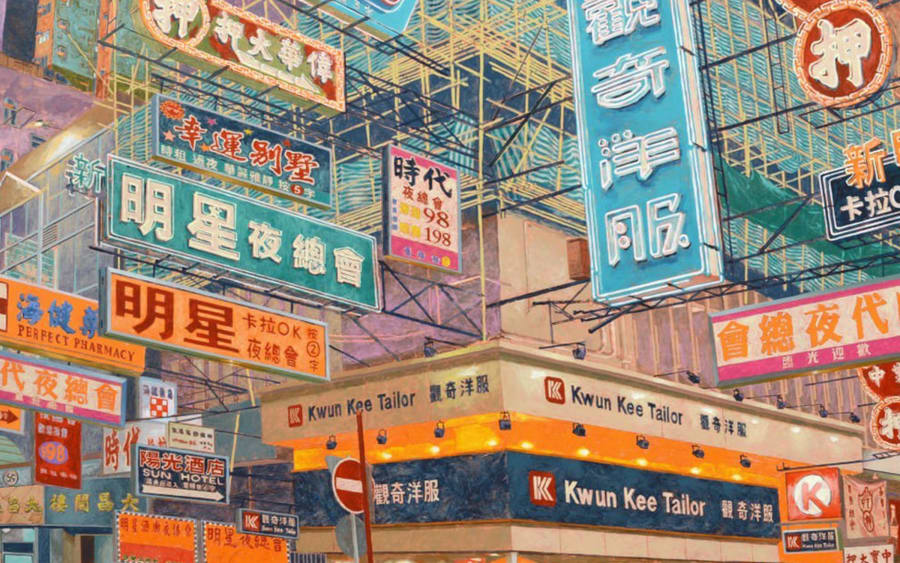Just before dialing in to a video call with Hu Xiaoyuan, I pause to look at her WeChat profile picture: it’s a casual headshot taken in the back seat of a moving car, in which the artist, wearing a red stud earring, meets the camera’s gaze as if caught mid-turn. In the photo, Hu has a shaved head, but when she answers, she has a full head of hair. Our conversation naturally begins there.
I learn that the picture was taken around 2006, when she was 29 years old, and am surprised by how little she’s changed, even after nearly two decades. At the time the snapshot was taken, Hu was preparing to participate in Documenta 12 in 2007. Her contribution – one of the first by a Chinese artist – included a series titled ‘Keepsakes I Cannot Give Away’ (2005–2006), which used her own hair for embroidery. ‘That series carries a direct imprint of my identity, because the material comes from my own body,’ she reflects. ‘It embodies a highly personal and complex collection of experiences, like a physical extension of my emotions.’
For Hu, this ‘collection of experiences’ was shaped by deep uncertainty, anxiety, and pain. At the time, she navigated the challenges of establishing herself as a young artist in Beijing, while grappling with the influence her parents had on her sense of selfhood. Her shaved head was not only a result of incorporating her own hair into her art, but also a symbol of resilience and resolve as she battled internally. By the time the work entered the permanent collection of M+ Museum in Hong Kong via Uli Sigg a few years later, Hu felt much better. But, she says, the darker times gave her a more nuanced perspective on life: ‘If you’ve only experienced a singular version of happiness and joy, compared to having gone through the full spectrum of emotions, doesn’t the former seem too flat, too restricted?’ The old profile picture represented a moment of personal renewal: ‘The pain you once endured – so long as you don’t remain trapped in it and you can pull yourself out – can actually be a gift. That’s why I deeply cherish that lowest point. It was, in a way, a new beginning for me.’
Hu maintains a studio on the second floor of a building in Beijing’s 798 Art Zone, while her husband, fellow artist Qiu Xiaofei, works downstairs. Hu upholds a strict policy of studio tidiness, with designated areas for production and storage. Since almost all of Hu’s recent works have just been shipped to Hong Kong for her exhibition at Tai Kwun Contemporary, the pieces that remain in the studio are older and more personal. Although perhaps not as refined or visually impactful as those she has exhibited at Beijing Commune or West Bund Museum in recent years, they clearly carry great significance for Hu, who discusses them with lighthearted enthusiasm. Take, for instance, Untitled No. 6 (2015) – a pink stool with a net woven from hair suspending a boiled egg. Though the egg was boiled nearly two decades ago, ‘because Beijing is so dry, it never decayed,’ Hu chuckles.
Next to the stool is Spheres of Doubt/Farewell, Forever I (2021), a table-like piece in which Hu used recycled aerospace aluminum. In Spheres of Doubt VII (2022), she pairs it with raw silk, a material she frequently incorporates into her practice. The juxtaposition of shiny, hard metal and translucent, soft fabric creates a striking contrast between industrial strength and ethereal delicacy.
Once considered top-tier technology, the aerospace aluminum is now readily available as standard construction material. It has become so commonplace that it is used in the interior lining of food-delivery boxes. Hu is fascinated by how, in just a few decades, this material has undergone a dramatic transformation from an exclusive, high-tech, almost-celestial substance to something cheap and ubiquitous, accessible to anyone. ‘I can’t help but think about the [material’s] journey – from the heights of advanced technology to the mundane,’ she says. ‘History seems to have veered from the path we once thought it would follow.’
The idea is prominent in Hu’s recent thinking: ‘Veering’ is also the title of her exhibition at Tai Kwun Contemporary, her first solo museum show in Hong Kong. The exhibition features 12 commissioned works from seven series, spanning a range of mediums, from installation to video and text. It also includes a poem written by the artist in homage to the French poet Paul Celan, which has been translated into Esperanto – an international language constructed in the late 19th century with the aim of fostering global communication and unity. For Hu, Esperanto is a prime example of how things can veer from their intended path. ‘I remember as a child in the late 1980s and early 1990s, Esperanto was so prominent that I would hear entire radio programs in that language.’
Widely embraced in China in the 1980s, Esperanto has now faded into obscurity, surviving primarily through the support of UNESCO organizations. When the artist sought a translator for her poem, she had to track down one of the language’s few remaining speakers. ‘Somewhere along the way, it veered off course,’ Hu remarked on the decline of Esperanto from a utopian vision to a near-forgotten relic. ‘It’s as if, at a certain point, the language took an alternative route – an errant path. That idea of veering onto an unexpected trajectory became the very foundation of this exhibition. I incorporated light and sound interventions and designed pathways that shape the visitor’s movement. I want to describe something that is not a wrong path but rather an alternative one – a different route that emerges when you find yourself seemingly rejected by the times.’
Our conversation veered from there as Hu showed me her desk. Scattered across its surface were strange yet captivating objects – a stone, a dried pomegranate, a hardened baguette, and more – all wrapped neatly in pieces of delicate silk, like intimate garments. Hu frequently employs raw silk in her work, which, unlike finished silk, is translucent and has a natural stiffness that allows it to hold its form. Hu’s fascination with the material began when she discovered a piece of the fabric that had belonged to her mother – a figure with whom she has had a complicated relationship.
Hu picked up the silk-wrapped dried pomegranate, its surface blackened and shriveled, now much smaller than the casing that once fit it perfectly, like a star collapsing in on itself. ‘It fell from a tree in my courtyard. I wrapped it in silk, encasing the pomegranate in its fresh state. We say seeing is believing, but is that really true? The pomegranate was once plump, undeniably real. Now, it has withered, its core retreating within the silk – is this not real, too? Reality is never still. The moment we finish this conversation, the fruit will have already changed again. When we insist with absolute certainty that seeing is believing, we may, in fact, be placing the greatest obstacle in the way of truly understanding what reality is.’
I did not expect Hu’s gentle act of preservation to lead to a revelation about the transient nature of reality, but I found myself thinking about that pomegranate long after we finished our call.
Hu Xiaoyuan is represented by Beijing Commune. ‘Veering’ opens at Tai Kwun Contemporary in Hong Kong on January 24.
Leo Yuan is a writer and curator based in New York City. He received his BA in art history from the University of Pennsylvania and MA in art history from the Institute of Fine Arts at New York University.
All photos by Li Wei for Art Basel.
Published on January 22, 2025.


